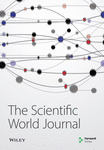The Origins, Specificity, and Potential Biological Relevance of Human Anti-IgG Hinge Autoantibodies
Abstract
Human anti-IgG hinge (HAH) autoantibodies constitute a class of immunoglobulins that recognize cryptic epitopes in the hinge region of antibodies exposed after proteolytic cleavage, but do not bind to the intact IgG counterpart. Detailed molecular characterizations of HAH autoantibodies suggest that they are, in some cases, distinct from natural autoantibodies that arise independent of antigenic challenge. Multiple studies have attempted to define the specificity of HAH autoantibodies, which were originally detected as binding to fragments possessing C-terminal amino acid residues exposed in either the upper or lower hinge regions of IgGs. Numerous investigators have provided information on the isotype profiles of the HAH autoantibodies, as well as correlations among protease cleavage patterns and HAH autoantibody reactivity. Several biological functions have been attributed to HAH autoantibodies, ranging from house-cleaning functions to an immunosuppressive role to restoring function to cleaved IgGs. In this review, we discuss both the historic and current literature regarding HAH autoantibodies in terms of their origins, specificity, and proposed biological relevance.




